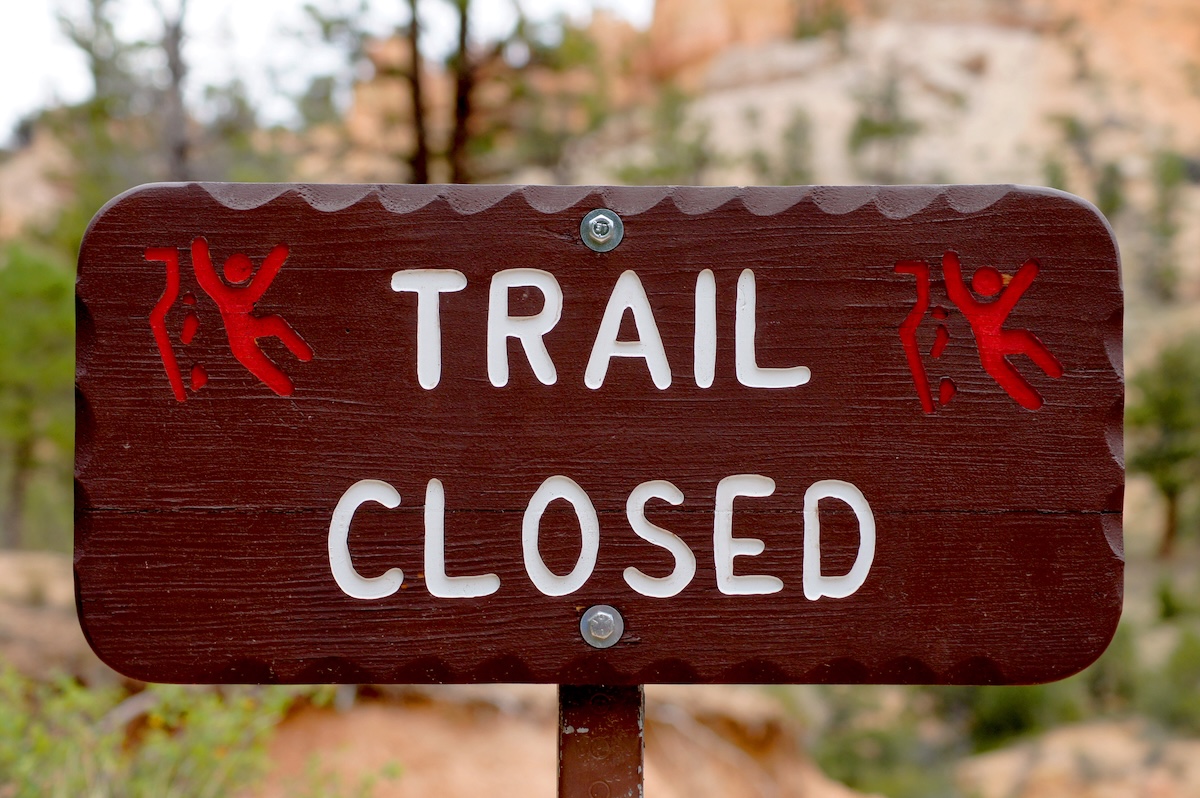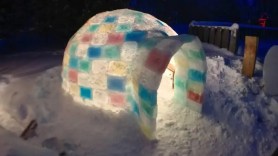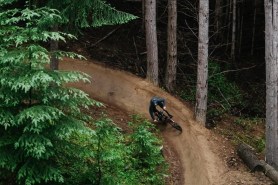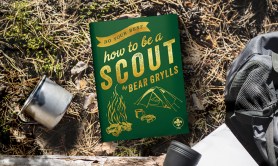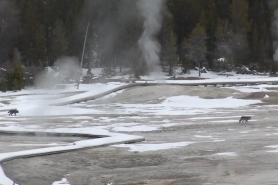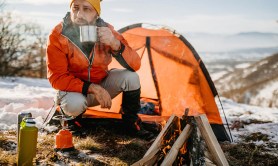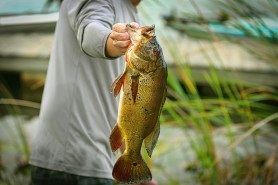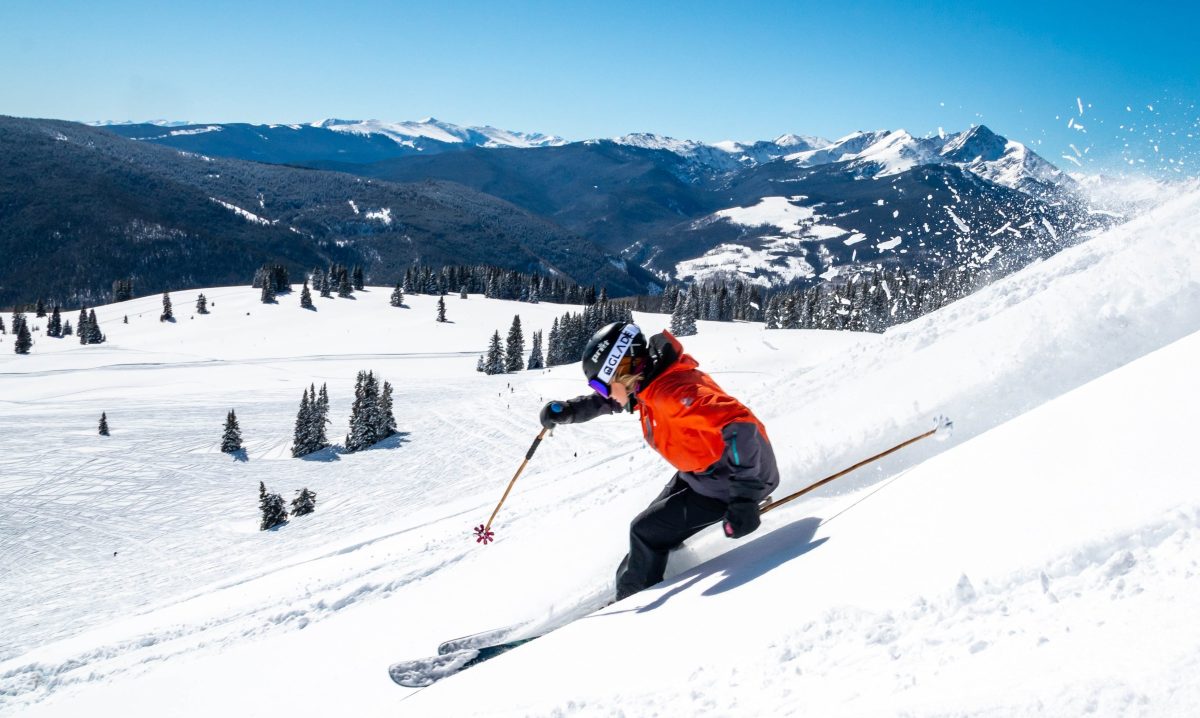

A fresh delivery of fluffy powder can be as exciting as Christmas morning — it means your ski day is going to be full of that wild, weightless magic as your sticks take you cruising over cottony clouds in a way that seems to defy gravity.
Videos by Outdoors
But if you’re new to it, deep powder can be a wild animal to tame. Everything you know about how to trail ski — where to put your weight, how to turn — basically goes out the gondola window as your burning quads spiral you into frustration.
First, what qualifies as powder?
Typical resort skiing is downhill skiing on hardpack, whether groomed or ungroomed trails. When you get fresh snow on top of this, it’s considered powder.
However, that powder can totally vary from your basic dusting of a fresh inch lightly coating a groomer (ideal to make the trail less icy and offer a smoother ride) to knee-deep fluff that masks any of what was there before.
Learning to ski powder on a light coating is ideal as you only have to change your ski style a little bit to stay on top. But if you’re looking to cruise on top of a few inches or more, the physics of that snow —lightweight yet dense with moisture — requires you to adopt a whole new technique in order to move through the pile without sinking down into it.
Here are the best tips to learn to ski serious powder:
Shift your balance
For light powder, you don’t have to change very much about your approach. But once the powder starts to get deeper than two or three inches, you’ll have to shift pretty much every aspect of your weight from what you’re used to on hardpack.
Ideally, when skiing deep powder, you want to sit back slightly — but not so far back that you’re in a chair squat. Your instinct will be to really lean far back, since this keeps your tips above the snow, which feels safe, but it actually forces the back of your skis down too deep, making your skis harder to control.
Instead, you want to stand centered over your skis, bending your knees and relaxing into a skier’s stance (shoulders over toes, butt just past your heels) with ankles flexed and your shins pressing into the front of the boot. Your tips should be dipping in and out of the snow as you glide through the fluff.
Keep a narrow stance
On powder, assuming you are skiing parallel, you want your skis to be as close together as possible. This keeps your body tight and better able to control your movement. But also, it avoids you building up any drag on your outside ski, which will pull your feet apart and cause you to sink into the snow.
Also, keep your weight evenly distributed on both skis, rather than on your downhill ski like you might do on hardpack.
Don’t resist gravity
Whereas a lot of skiing groomed terrain is about trying to control your edges and your speed, when skiing powder, you want to just ride the wave and let the physics of this heavenly wonderland do what it’s going to.
The snow is going to give you micro pushes in every direction — the weight of even small amounts of powder pouring onto your ski tips while you dip in and out will affect your balance, and sometimes the powder will change texture underfoot as you ski from shade to sun to windy spots, which can catch your skis in surprising ways.
Your goal in this is just to stay balanced and not to let the snow push you around. You’ll likely have to go faster than you may be comfortable to stay on top of the powder, but speed is your gateway to floating. Be ready for the tugs and the pulls of the snow by bracing your core. You want to find a balance between flexing and extending through the resistance of the powder, but not pushing against it. You have to surrender to the powder to ride it, but still keep your body upright to float.
Point your skis downhill
Because powder already slows you down and you need to keep speed up to not sink into the pillow, you want to stay pointed downhill as much as possible. Whereas on freshly groomed trails where you’re making deeper turns that generally move you across-trail to help control your speed, in powder, you want to make shallower turns that keep your nose pointed downhill.
Steer with your shins
Forget about carving with your edges — for powder turns, you want to use your legs to steer you downhill. A helpful way to think about this is guiding the direction with your shins and aiming to slither downhill like a moving snake, in a long and loose “S”.
Pole plant like a pro
Perfecting your pole plant is the final step to riding powder. Pole planting is where you lightly poke into the snow out in front of you just before you initiate a turn to give yourself a bit of balance assistance as your body moves to start the turn. This art is crucial in powder where it’s harder to keep your balance during turns and where you want a little more assistance maneuvering through the snow. Powder pole plants should be a much slower pole swing, over the count of three, as you bop from side to side and keep up speed moving downhill.
Consider upgrading your equipment
If the powder playground has you hooked, consider buying or renting a powder-specific set-up for easier gliding on fresh drop days. Fat skis help you float on top of the fluffy stuff better than narrow skis that keep you fast on downhill hardpack. Also, having a tip rocker can help the front of your skis pop up above the snow as you glide down.
Photo by Glade Optics on Unsplash, taken at Vail. One of our favorite places in Colorado to ski!


